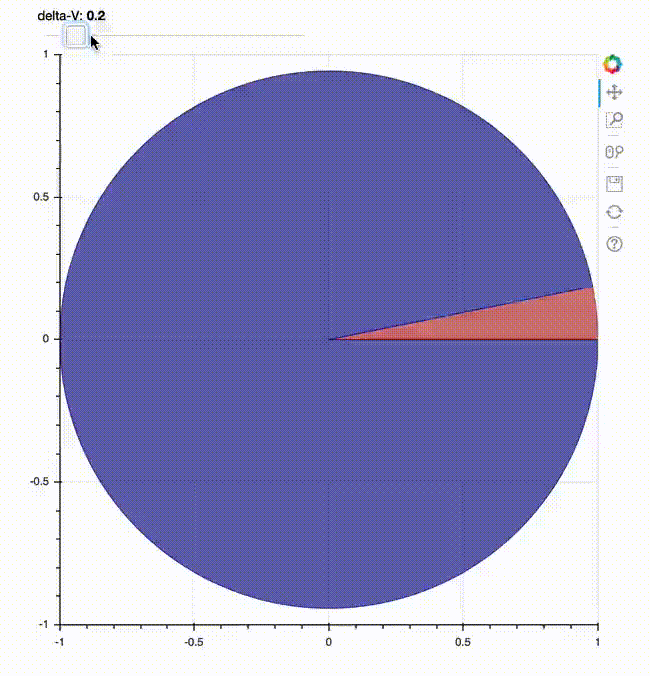我是Bokeh的新手,我很想知道如何使用Bokeh繪製Jupyer/Python中的簡單交互式餅圖。我打算在頁面here的底部解釋如何在Bokeh中使用'CustomJS和Python函數'。餅圖由兩個條目組成,其中一個滑塊可以改變(v1 + v2)圓形內一個餅圖'v2'的形狀。我試圖按照散景網站中的示例來展示與正弦圖的交互性,但我無法使用它與我的餅圖一起工作。任何幫助將不勝感激。以下是我在Jupyter筆記本中使用的代碼塊。使用散景繪製Jupyter/Python中的交互式餅圖
import numpy as np
import matplotlib.pyplot as plt
from bokeh.layouts import column
from bokeh.models import CustomJS, ColumnDataSource, Slider
from bokeh.plotting import Figure, output_file, show, output_notebook
from bokeh.charts import Donut, show
#output_file('donut.html')
output_notebook()
v1=1
v2=.2
import pandas as pd
data = pd.Series([v1,v2], index = list('ab'))
plot = Figure(plot_width=400, plot_height=400)
plot = Donut(data)
def pie_chart(source=data,window=None,deltav=None):
data = source.data
v2 = deltav.value
#v2 = data['v2']
source.trigger('change')
slider = Slider(start=.1, end=1., value=.2, step=.1, title="delta-V", callback=CustomJS.from_py_func(pie_chart))
callback.args["deltav"] = slider
l = column(slider, plot)
show(l)
這是優秀的代碼!感謝大家提出這個建議。我不知道bokeh.charts的侷限性。現在,有沒有辦法刪除餅圖後面的軸,網格和白色?另外,是否可以使用bokeh.plotting繪製甜甜圈圖表(帶洞的餅圖)? –
是的,請參閱用戶指南的[樣式視覺屬性](http://bokeh.pydata.org/en/latest/docs/user_guide/styling.html)部分。對於另一個問題,是的,還有一個'annular_wedge'的字形方法,它可以同時取內外半徑 – bigreddot
實際上完全擺脫座標軸,你會想'figure(...,x_axis_location = None,...) '我猜想其他地方有記錄。擺脫柵格是一個syling問題壽(網格線顏色設置爲無) – bigreddot